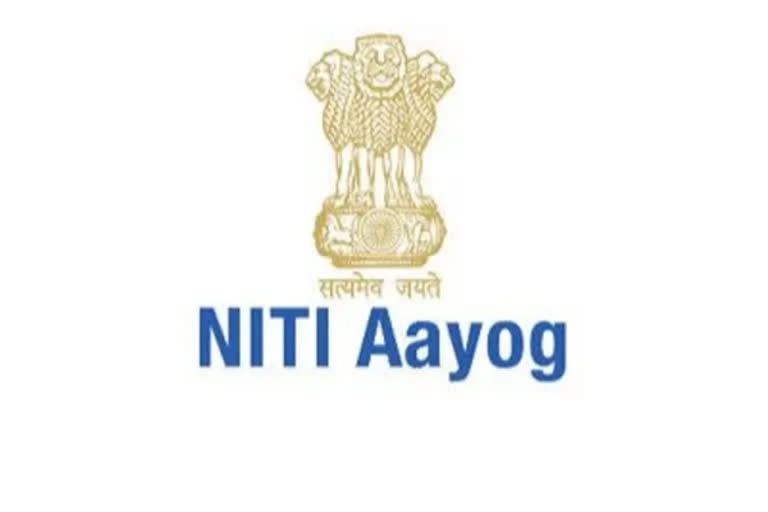New Delhi: India's trucking market is expected to grow over four times by 2050, a Niti Aayog report said on Friday and suggested that financial institutions can work to structure more-favourable financing solutions for zero-emission trucks. The report titled 'Transforming Trucking in India: Pathways to Zero-Emission Truck Deployment' further said as road freight travel continues to grow, the number of trucks is expected to more than quadruple, from 4 million in 2022 to roughly 17 million trucks by 2050.
"India's trucking market is expected to grow over 4x by 2050 -- fuelling the nation's economy and transportation emissions," it said. Pointing out that road transport (i.e. trucks) carries the bulk of India's goods, 70 per cent of today's domestic freight demand, the report said heavy and medium-duty trucks (HDTs and MDTs) are responsible for most of that road transportation.
According to the report, currently, India transports 4.6 billion tonnes of freight annually, generating a transport demand of 2.2 trillion tonne-kilometres (tonne-km) at the cost of Rs 9.5 lakh crore. Noting that demand for goods is rising with urbanisation, population increase, the rise of e-commerce and rising income levels, the report said as this demand continues to grow, associated road freight movement is expected to increase to 9.6 trillion tonne-km by 2050.
"In light of these market trends... lenders and other financial institutions can work to structure more-favourable financing for ZET loans through tailored loan products, better-informed depreciation criteria, and alternative credit evaluations," it suggested. Zero-emissions trucks (ZETs) -- including battery electric trucks (BETs) and fuel cell electric trucks (FCETs) -- do not have tailpipe emissions and have lower operating costs.
As per the report, transportation costs are a major driver (62 per cent) of overall logistics costs in India, accounting for 14 per cent of India's GDP. "Since diesel fuel costs account for the overwhelming majority of transportation costs, ZET adoption can dramatically lower associated fuel costs by up to 46 per cent over the vehicle's lifetime, with broad implications for the Indian economy," it noted.
With cost competitiveness and technology maturity, the report predicted that nearly 9 in 10 trucks sold in 2050 can be ZETs. The report pitched for leveraging policy intervention to reduce charging costs, including upfront subsidies, electricity tariffs that remove demand charges and/or implement EV-friendly rate structures, and concessional land for building out ZET charging infrastructure.
It also suggested streamlining the infrastructure installation process to minimise the permitting and interconnection processing times for charging infrastructure development to lower charging deployment soft costs. As per the report, road freight accounts for more than 25 per cent of oil import expenditures and is expected to grow over 4x by 2050.
ZET adoption can eliminate a cumulative total of 838 billion litres of diesel consumption by 2050, which would reduce oil expenditures by Rs 116 lakh crore through 2050, it said. Nothing that over 75 per cent of the freight market is made up of small owner-operators who own fewer than five commercial goods carriers, it said this disproportionate amount of smaller regional aggregators create a high degree of fragmentation, resulting in unsustainably low returns.
The report noted that discounts on interest rates of loans for buying ZETs can allow financiers to develop a learning curve on the technology without taking on high risk or delaying adoption. On the other hand, it said dedicating loan reserves to provide guarantees for ZETs helps distribute risks for lenders in case of loan default.
The report suggested that multilateral and bilateral development banks can also be brought in as funders of risk-sharing facilities, with public sector banks acting as facility managers. In lieu of dedicated schemes for interest subvention or risk sharing, governments can incorporate ZETs into existing programmes for enterprise owners and small road transport operators, it said. (PTI)



